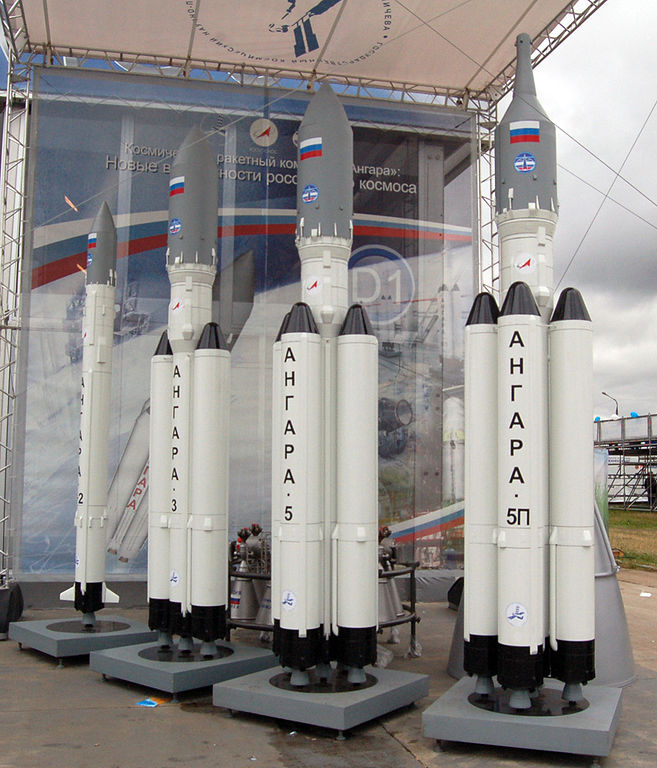Russia Has a New Space Rocket Design, a First Since the Soviet Era
It’s been years since we’ve heard anything major about the Russian space endeavors. The once close competitor of the United States in the space race hasn’t been very active in recent decades. This year, however, it appears the Russians are getting back on track with the debut of its new space rocket design. This is the first time since the Soviet era for Russia to change its rocket design.
Angara Family of Rockets
The new space rocket design is called Angara. It is set to phase out the older space vehicles of Russia, including the heavy-lift Proton launcher. This new family of rockets was developed by Khrunichev State Research and Production Space Center. They feature a modular design that is based on a common Universal Rocket Module (URM-1). Two or four additional URM-1s will be added to the launch vehicles depending on the configuration, similar to the idea behind the Delta IV Heavy and the Falcon Heavy launch vehicles. What’s noticeably different though is the size of the boosters. Angara’s are much smaller in comparison.
Currently, only two Angara configurations are in development. These are the Angara 1.2 (the one launched on Wednesday) and Angara A5. Angara 1.2 has is a two-stage configuration with one URM-1 and one RD-191 for the first stage and a second stage consisting of Block I and RD-0124A. It has a thrust of 1.92 MN, launch weight of 171.5 tons, height of 41.5 meters, and a 3.8-ton payload. Angara A5, on the other hand, has three stages. The first stage has five URM-1s and one RD-191. The second stage has one URM-2 and an RD-014A while the third stage has the Briz-M/KVTK. Angara A5 has a height of 55.4 meters, launch weight of 759 tons, a 9.61 MN thrust, and payload of 24.5 tons.
First Change Since the Soviet Era
While it can be said that the Angara family marks the first time Russia has redesigned its space rockets, the development of Angara actually started in 1994 or around 20 years ago. Russia spent a total of around $3 billion to finally get the Angara family of rockets ready for launch.
Test Launching
Angara was test launched on Wednesday, July 9 this year. It had its liftoff from the northern military space port of Plesetsk. This launch was actually not the first launch attempt for Angara. It was supposed to have launched last month, with a bigger media coverage and more hype. However, the launch had to be pulled back because of technical difficulties. attributed by engine designer, Energomash, to the pressure drop in the liquid oxygen tank.
The test launch made Angara carry a dummy payload. It was not intended to go into orbital altitude. The successful test launch was not covered by Russian and international media but only confirmed by the Russian military news agency Interfax-AVN. The news agency reported that Russian Defense Minister Army General Sergey Shoygu reported the positive results of the launch to President Putin, the supreme commander of the Russian Armed Forces. The news agency added that parts of the rocket fell back to Earth, as expected, in the designated area of the Kura range in Kamchatka peninsula around 5,700 kilometers away from the launch site.
Angara Test Launch Configuration
The successful Angara debut launch on Wednesday employed a very basic configuration referred to as the Angara-1.2PP. This means that the rocket had a payload of four tons to send the rocket into a low-Earth orbit, similar to the launching configuration used when sending satellites into space. Other configurations are in line, including a heavy-lift configuration called Angara-5 which can put up a payload of 7.5 tons into the geostationary transfer orbits where telecommunications spacecraft go. Succeeding test launch endeavors will be from Plesetsk and Vostochny Cosmodrone, a new facility being completed in the Amur Oblast in Russia’s far east section.
Russia’s renewed interest in space technology is a welcome development. The new rockets will address Russia’s reliance on external suppliers for its rocket technology. For now, the immediate plans for the Angara rockets are limited to unmanned launches although manufacturer Khrunichev said that it is developing a human-rated version to be launched from the Vostochny Cosmodrome.
![By Wikibob, [public domain], via Wikimedia Commons](https://techtheday.com/wp-content/uploads/2014/07/Angara-rocket-family-models.jpg)

